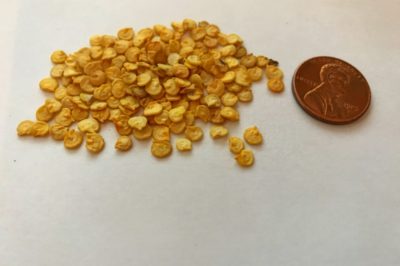Starting Seeds Outdoors
Peppers originated in the tropics of Central and South America. They are warm season vegetables that enjoy lots of sun and humidity. If you live in a climate with more than 150 days of frost-free weather, you can get away with starting pepper seeds outdoors depending on the variety. Otherwise, gardeners start pepper seeds indoors and transplant them into the garden at a warmer time.
Sow seeds directly when the soil has warmed to at least 65°F (18°C) and there is absolutely no danger of frost. When starting pepper seeds outdoors, plant them 1/2 inch deep into well-cultivated soil that has been amended with plenty of rich compost. Water them in, and keep the soil damp but not wet.
Starting Seeds Indoors
Soak pepper seeds for 2-8 hours before planting them to speed germination. A solution of weak chamamile tea will aid in sterilizing and breaking down cell barriers. Prepare a seedling tray by filling 3/4 full with a fine organic seeding mixture. Popular ingredients include:
- Coconut Peat
- Vermiculite
- Compost
Place seeds on the surface about 1-inch apart. If you are planting hot peppers, wear gloves while handling the seeds to avoid getting burned. Top the seeds with 1/2 inch of seeding mixture. Compress lightly with your hands and water until damp but not wet.
Cover the seedling tray with a plastic lid or plastic wrap to form a small greenhouse. Place the tray in a very warm area. Ideal germination temperature is 80°F (26°C). The lower the temperature, the longer they will take to sprout.
Seedling Care
Sprouting can take anywhere between 10 and 25 days depending on the temperature, length of soaking time, and variety of pepper. Check the soil periodically for signs of sprouting or dryness. It should be moist, but not overly wet.
As soon as sprouts appear, move the trays under simple florescent lights or onto a sunny windowsill. When the plants have two pairs of true leaves, transplant them into 2-4 inch pots.
Transplant peppers outside about one month after the last frost date in your region. Peppers can take between 100-150 days to reach maturity, but will continuously fruit once mature.
